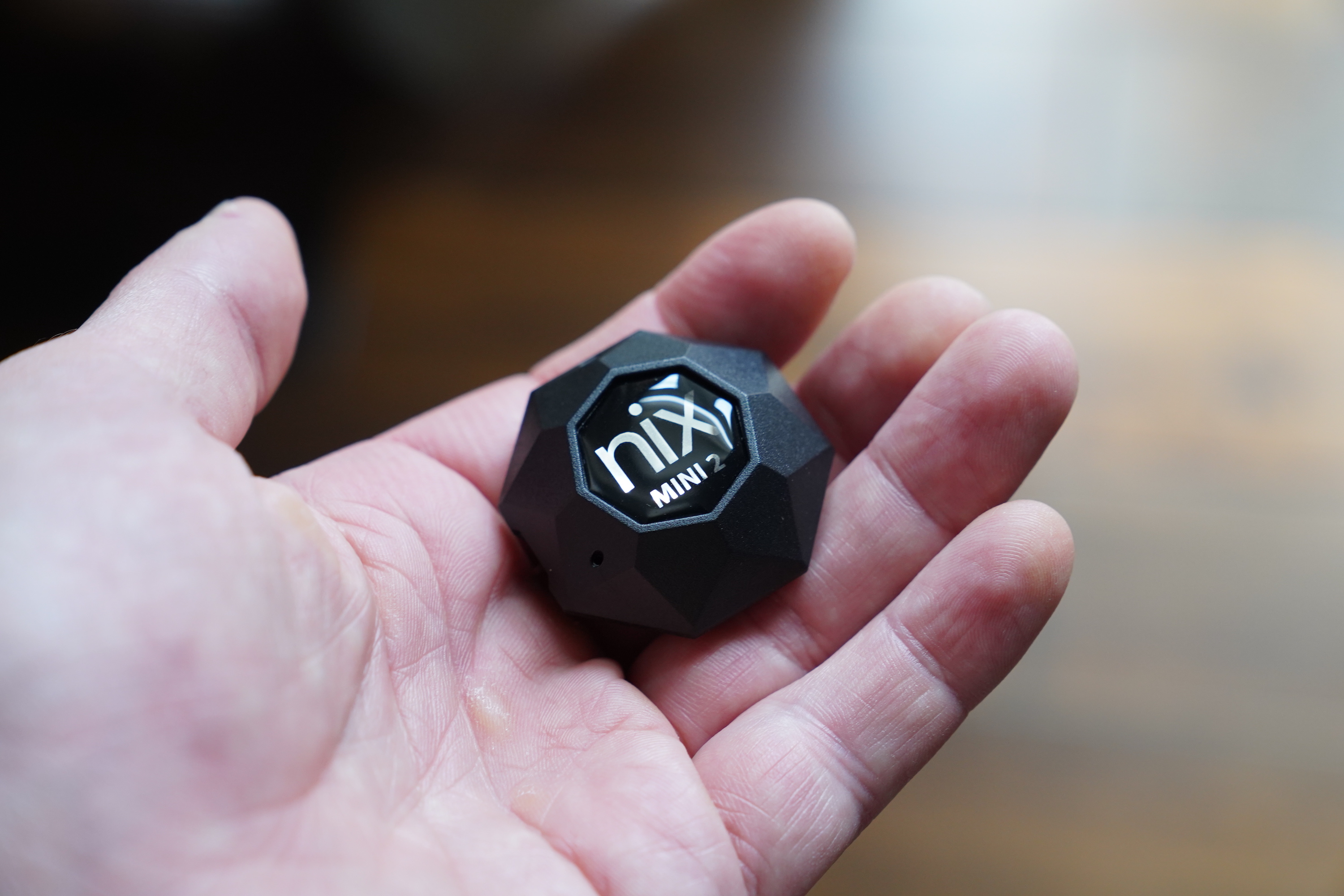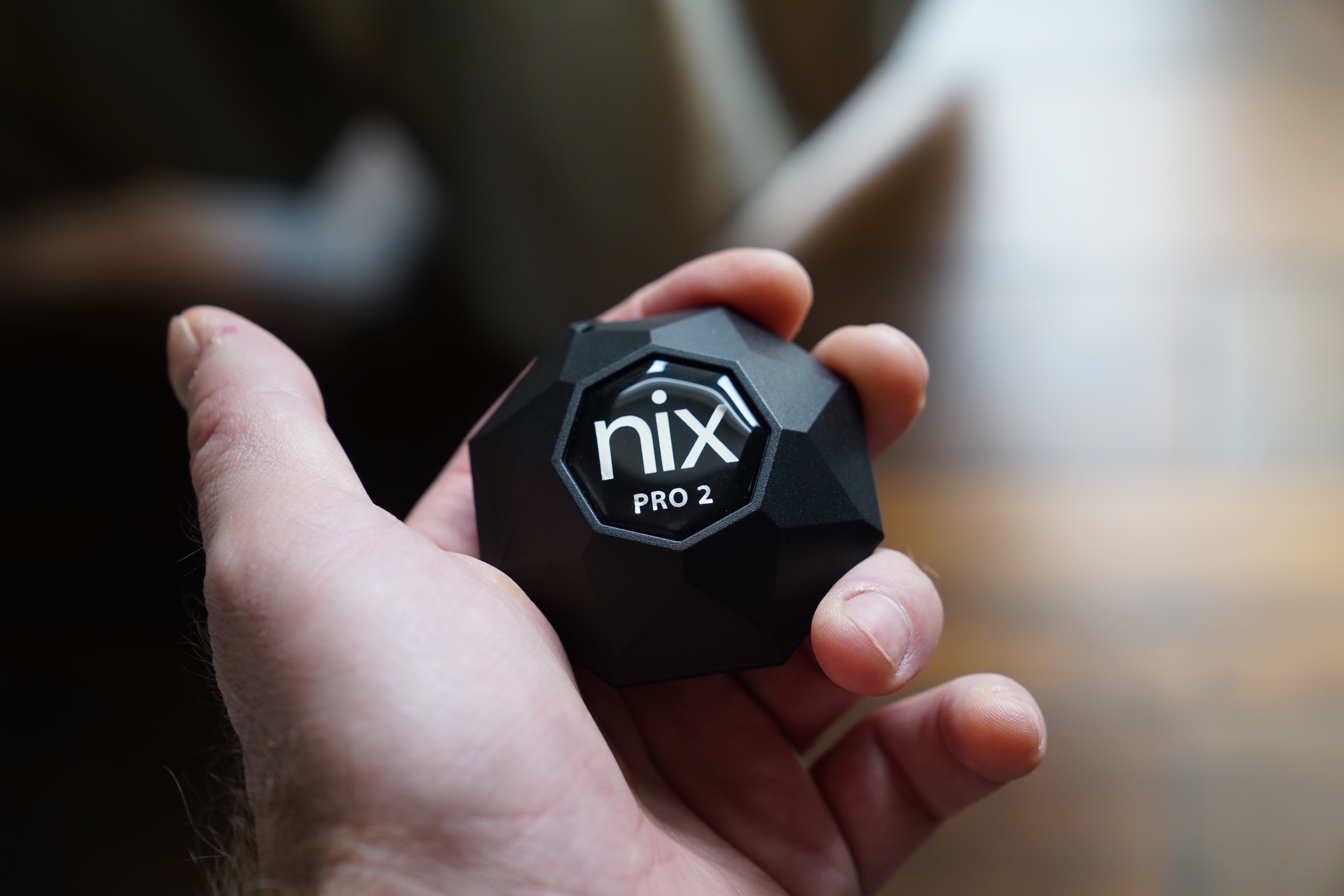Nix Pro 2 and Nix Mini color sensors are powerful, easy-to-use additions to any creative pro toolkit
Translating the physical world to the digital has been a challenge, especially when it comes to things like color: Color isn’t actually all that static a thing, and the myriad displays and cameras we use can represent them in very different ways. But new gadgets from startup Nix can help cut through the confusion – the Nix line of color sensors, including the accessible Nix Mini (normally $99) and the more sophisticated Nix Pro 2 (normally $349).
These devices are deceptively simple in their use and construction, but do one job remarkably well – with a lot going on behind the scenes to make that possible. They’re main purpose is to give you a digital interpretation of an analog color, which could be the color of any surface you come across. To do this, they house a small lens and sensor inside a diamond-shaped plastic enclosure. Both the Mini and the Pro are easily pocketable, but the Mini is about the diameter of a large coin, while the Pro feels more like a golf ball in the hand.
 The sensors include built-in batteries that charge via Micro USB, and since they aren’t really using that much power when in operation, you can get around 3,000 individual surface scans out of a single full battery. Using them is also fantastically easy: You download an app (Nix has three, including one for digital color capture, one for paint, and one for Pro users with additional info useful for professional paint shops and other applications), pair one of the devices (they should show up automatically once charged) and then tap a button in the app to scan a surface, holding the Nix up to said surface.
The sensors include built-in batteries that charge via Micro USB, and since they aren’t really using that much power when in operation, you can get around 3,000 individual surface scans out of a single full battery. Using them is also fantastically easy: You download an app (Nix has three, including one for digital color capture, one for paint, and one for Pro users with additional info useful for professional paint shops and other applications), pair one of the devices (they should show up automatically once charged) and then tap a button in the app to scan a surface, holding the Nix up to said surface.
The process is super quick, and provides different results depending on which app you’re using. In the Nix Paints app, once you select your preferred brand, it’ll give you the closes possible off-the-shelf matches, which is great if you’re doing patch work or repainting a portion of your house. You can also get a palette of complimentary or otherwise matching colors for redecorating. And the ‘Digital’ app lets you see all the HEX and other values you’d use for web or digital product design, and also build palettes that work together for project work.
[gallery ids="1917679,1917680,1917681,1917682"]
Nix Pro provides a range of color readouts that are used by professionals for super-accurate matching and measurement, and you can again use the built-in paint library to match accurately, or the color values to have a batch custom mixed to your specifications.
Nix can scan just about any surface, including all types of paints and fabrics, as well as tile and other flooring. It’s an accessory that really makes quick and painless what has been a pretty messy process in the past, and it also comes calibrated out of the box so there’s nothing the user has to do to ensure color accuracy when actually using it.
from TechCrunch https://ift.tt/33umJsN

Comments
Post a Comment